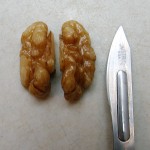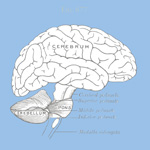 Part Three of Derek Parfit’s Reasons and Persons is titled “Personal Identity”. One of its central claims is what Parfit calls the Reductionist View: that persons are not “separately existing entities” over and above their brains and bodies. What is important about being the same person at different times consists primarily in psychological continuity and connectedness.
Part Three of Derek Parfit’s Reasons and Persons is titled “Personal Identity”. One of its central claims is what Parfit calls the Reductionist View: that persons are not “separately existing entities” over and above their brains and bodies. What is important about being the same person at different times consists primarily in psychological continuity and connectedness.
Another, related claim is that being the same person is not in itself very important. In particular, it is not a rational justification for self-concern. If I know that someone in the future will not be myself, that is not a good reason not to anticipate having that person’s experiences. What is important are the underlying, real relations of psychological continuity and connectedness. And even they do not have exactly the same importance that we tend to believe personal identity has.
Part Three of Reasons and Persons contains 150 pages of closely-reasoned arguments which are by and large original, compelling, and illuminating. I will not try to restate all of Parfit’s arguments, or to comment on them all; instead, I strongly recommend his book to anyone interested in this subject. In this post, I will review one of Parfit’s more important lines of argument in Chapter 12, “Why Our Identity is Not What Matters.”
Brain-Splitting
Parfit begins this chapter by making a refreshing break from the philosophical practice of thought-experiments, building instead on actual cases documented in medical literature. These are the famous ‘split-brain’ cases, in which surgeons severed the corpus callosum, the main bundle of nerve fibres connecting the left and right hemispheres of the human brain, as a treatment for epilepsy. Cutting the connection reduces the severity of epileptic attacks by preventing seizures from spreading from one hemisphere to the other. But there are side-effects.
The effect, in the words of one surgeon, was the creation of ‘two separate spheres of consciousness’. (p 245) Continue reading “Parfit on What Matters”
 Published in 1998, Raymond Martin’s Self-Concern set a new direction for the philosophical discussion of personal identity by shifting the focus from “the normative question of whether this or that should matter in survival to the largely descriptive question of what…actually does…matter.” Martin questions the philosophical goal of trying to show that we all should (rationally) respond in the same way to the puzzle cases – a goal shared by Parfit and his opponents – calling the attempt “survival-value imperialism.” In examining how people actually value their own survival, his book goes a long way towards characterizing the conditions that make it difficult or easy for people to self-identify across time. It is largely about the psychology of self-concern. Continue reading “The Anatomy of Self-Concern”
Published in 1998, Raymond Martin’s Self-Concern set a new direction for the philosophical discussion of personal identity by shifting the focus from “the normative question of whether this or that should matter in survival to the largely descriptive question of what…actually does…matter.” Martin questions the philosophical goal of trying to show that we all should (rationally) respond in the same way to the puzzle cases – a goal shared by Parfit and his opponents – calling the attempt “survival-value imperialism.” In examining how people actually value their own survival, his book goes a long way towards characterizing the conditions that make it difficult or easy for people to self-identify across time. It is largely about the psychology of self-concern. Continue reading “The Anatomy of Self-Concern”

 Imagine, in the early days of books, a small library consisting entirely of original manuscripts. Some of them are very old, and have been attacked by mice. Some have deteriorated so much that their pages crumble to dust when the custodian of the library tries to read them. He mourns the loss of these books, and contemplates the inevitable decay of the remaining books with sorrow. To be sure, new manuscripts are occasionally added to the library, but they cannot replace the volumes that are lost forever. This goes on until, one day, the young assistant librarian has an idea. “This book will be unreadable in five years,” he tells his elder. “But I can read it now. If I copy the words of this book onto sheets of new vellum, and bind them in a strong new binding, we will be able to read it for many decades to come.” The old librarian tenderly strokes the cracked spine of the crumbling volume, and shakes his head. “What good is a copy? It wouldn’t be the same book.”
Imagine, in the early days of books, a small library consisting entirely of original manuscripts. Some of them are very old, and have been attacked by mice. Some have deteriorated so much that their pages crumble to dust when the custodian of the library tries to read them. He mourns the loss of these books, and contemplates the inevitable decay of the remaining books with sorrow. To be sure, new manuscripts are occasionally added to the library, but they cannot replace the volumes that are lost forever. This goes on until, one day, the young assistant librarian has an idea. “This book will be unreadable in five years,” he tells his elder. “But I can read it now. If I copy the words of this book onto sheets of new vellum, and bind them in a strong new binding, we will be able to read it for many decades to come.” The old librarian tenderly strokes the cracked spine of the crumbling volume, and shakes his head. “What good is a copy? It wouldn’t be the same book.”  Part Three of
Part Three of